How to Take Advantage of the Flush
And which dog is better…
by Larry Rich, a fellow Serious bird hunter
Over the years I’ve seen, heard and at times been lucky enough to intercept a grouse in a variety of situations, and over quite a few different dogs. Employing a little empathy and reasoning, I’ve come to have an opinion on how to capitalize best on a flush.
While not everyone who hunts grouse seriously does so with a dog, most do. Endless discussion of breed, temperament and hunt style can be debated. But in reality, any dog with the proper training and exposure can become a good grouse dog. It’s simply up to the individual hunter to decide what he can live with – what he expects out of his grouse dog.
Yet when choosing a dog, every hunter should consider something that has little to do with the dog: the anatomy of the flush.
Over the years, I’ve begun to look at the flush and the moment preceding the flush from the bird’s point of view. Whether feeding, graveling or resting, their first instinct is to avoid danger, and when doing that, the first thing they do is run.
When a hunter and a dog enter the picture, it’s usually the dog doing all the work. As our dogs get birdy, we prepare for a flush, knowing a grouse is running in front of the dog.
Scenario 1
We see a Setter running a quartering pattern, head held high, searching for body scent. Suddenly his head lowers a bit and his pattern narrows as he focuses on the scent cone. The bird too, is focused – on this dog closing in and following the bird’s every move as if guided by radar.
The bird scurries through bracken and blowdown until reaching a place where it decides to hold, in an attempt to hide. Whether the bird holds out of frustration or runs out of suitable cover, I don’t know. But I do know that once the bird has held, there are only a few things that can happen, and how they happen depends on you and your dog.
As the dog approaches, the bird is aware of the dire situation and begins to chart its final escape: a quick, thunderous flush to safety. Suddenly the dog stops, standing dead still in his tracks 15 yards away, close enough for the bird to hear the panting. Then comes the sound of a human bumbling and fighting his way through the noisy underbrush.
Just like the dog, the hunter is heading directly at the grouse. So now the grouse is looking for another way out, as his thoughts go from man, to beast, and back again.
As the hunter charges in, he becomes the most imminent threat to the bird – so the bird flushes with the subtleness of a Mac truck, around and through the nearest tangle of young growth, making its escape.
Scenario 2
That situation could have gone another way.
The bird, hunkered down tight, could be ready to crack under the pressure, as the Springer’s range decreases, until forced into flight along the path it’d charted when it first took refuge. Avoiding the jaws of the determined dog became a case of fly or die.
And as the grouse, so focused on the dog, sails towards safety, it’s surprised to see the hunter standing 20 yards away in a small clearing.
Bang!
Ergo…
The two situations are basic representations of what happens when hunting with a dog – the first example being a pointing breed, the second a flushing breed.
The threat awareness of the bird has led me to believe that hunter will kill more grouse when hunting with a flushing dog. Because when a dog points and then a hunter walks in to flush the bird, he becomes the primary threat to be avoided – and we all know the Houdini-like escape skills grouse have.
In contrast, with a flushing dog the dog is the primary threat to be avoided, and the bird is most likely not concerned with the presence of a human – and thus more likely to fly where it can be seen and shot.
Of course, “pointing-dog people” will tell you that grouse can be killed over points, and they can. I’ve done it. In fact, I was fortunate enough to once own a Setter that I would’ve been happy to have as my last and only dog if we were ever able to keep them for our lifespan.
I’ll also concede that a pointing dog will find more birds than a flusher – but that’s elementary, as a pointer covers more ground while a flusher must stay within gun range.
But I hold fast to my theory of grouse processing and planning an escape from the most imminent threat. The question is, do you want the imminent threat to be you or your dog?
Also How You Hunt
Like I said up top, it’s up to the individual hunter to decide what he can live with, what he expects out of his grouse dog. But another factor is the form his hunting scenarios will most likely take.
I’m primarily a solo hunter, so I want my dog to be the imminent threat while I wait for the bird to make a mistake on the flush and give me a shot.
Having had a Setter (and planning to have another one day), I can tell you that the other scenario is reality as well: I’ve been the imminent threat, escaped from way more times than I’d like to remember.
Should my situation be different – as in my hunting partners finding themselves with as much free time as I have – I’d capitalize on the manpower and hunt a pointing dog. Though the grouse would still be focused on the imminent threat, with three guys over one dog, one guy flushing and the others shooting, escape routes get well-covered and birds will be killed.
But until then I’ll let my dog be the star of the show, and will stand by my theory. In the end, it’s all about the anatomy of the flush, and what we do with it.
_____
Larry calls himself “a bonafide Masshole, from Boston. When I’m not dreaming about grouse hunting and trout fishing I’m trying to think of ways to convince those around me that I know what I’m talking about. I also make half-hearted attempts to get more people hunting and fishing, while subversively sabotaging their attempts to enjoy the sporting life to eliminate competition in the coverts and on the rivers.” His blog is here.
Category: Dogs in general, Ruffed Grouse, Tips

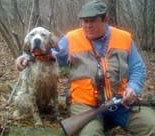




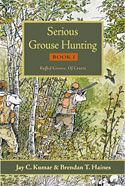
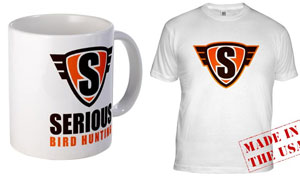
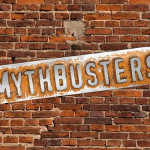
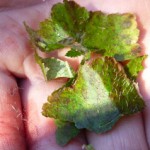
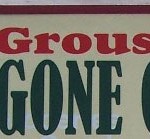
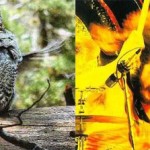
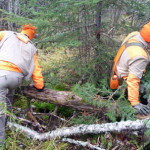
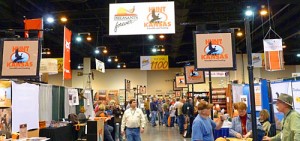
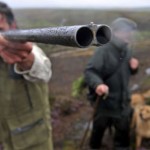
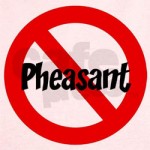
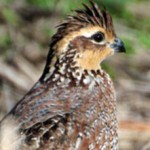
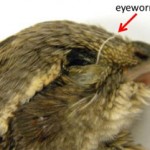
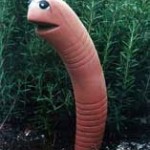
A thoughtful article. I have often thought about those type scenarios and wondered what would be the difference if I was hunting behind a pointing dog in lieu of a flusher. I have been very satisfied with my flusher but you know how it is, are there greener pastures behind a pointing dog. I enjoyed reading this perspective. I still would like to check out someones pointing dog just for the feel of it but as you point out that would again tip the scales in a different direction unless it was me going in for the flush each time.
Okay, how about the best of both worlds? When the cover is really thick, I say “okay” to my GWP, and she breaks point and flushes the bird. It certainly a great way to flush the grouse when the thorns are sharp, and it really wasn’t that hard to teach her to do.
I agree with article-I grew up hunting over spaniels, and currently have an English cocker and two setters. The spaniel has produced many crossing shots that put birds in the bag. However, I love the thrill of the point, and
I almost always hunt with a buddy, so we do harvest birds over the points. Having both breeds in the truck is nice as certain cover is more amenable to the spaniel- thorn apple or small coverts. Large Aspen slashes that don’t have a lot of obvious objects are made for wide ranging pointing dogs. Note that training a spaniel to hunt in range is more challenging than training a pointing dog to become staunch on point.
Interesting take. He’s right for a few more reasons; maybe its just the coverts in southern ontario we hunt are so hard pressed, but thus far I have never seen my Brit or my setter successfully point a grouse I was able to shoot. The birds nearly always busted before I even realized my dogs’ bells stopped dinging, much less closed the gap to shooting range. Other times when they did establish a good point, The bird flushed as I was cursing my way through a tangled jungle of underbrush, as in the above scenario. I have come to this conclusion however; either type will work (pointer or flusher) but in the big picture the flusher is better. If you want a good grouse pointer, you need to work him on grouse almost all the time. We mix it up alot throughout the year; pheasants and quail on preserves and CRP, woodcock in other coverts, partridge in other areas. The ruffed grouse to me is the king of game birds. and the king demands your full attention if your dog is to master him.